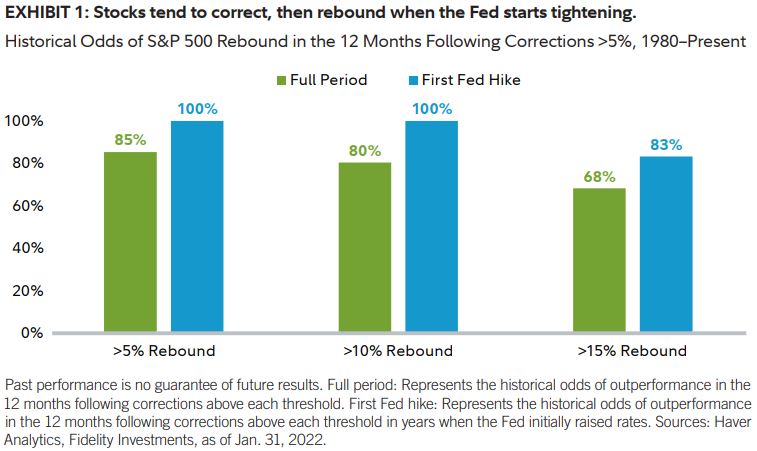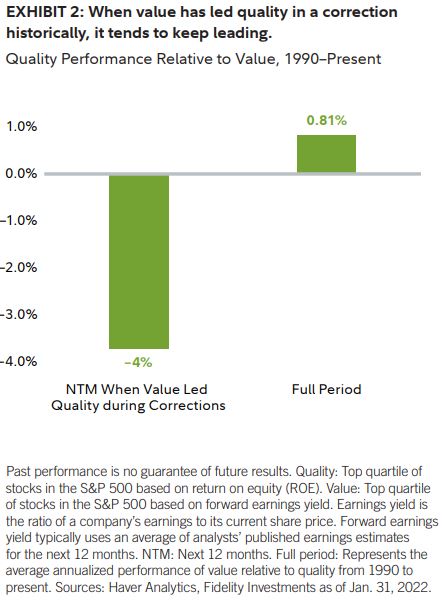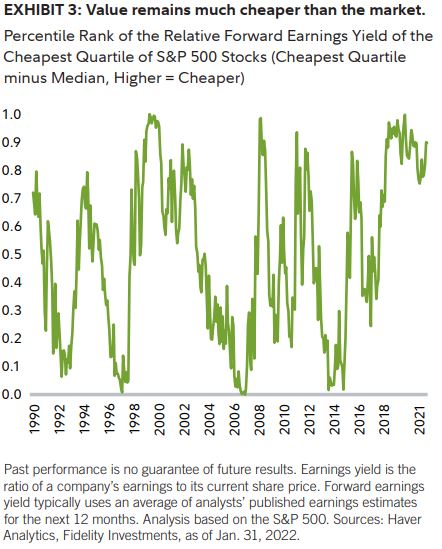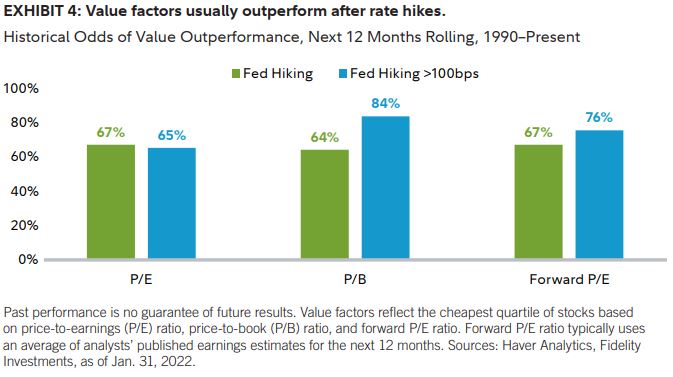|
Corrections are common, and so are rebounds While they can be unsettling, stock market declines greater than 5% are a normal part of the market’s cycle. Thirty-six of the 42 calendar years since 1980 have had sell-offs of more than 5%, including 19 greater than 10%. Corrections have been especially likely when the Federal Reserve (Fed) starts raising interest rates: Each first rate hike in a tightening cycle has prompted a more than 5% stock market decline. But investors should remember that rebounds are just as common as corrections. Since 1980, every time the Fed has started raising rates, stocks have followed their initial drop with a gain greater than 10% (Exhibit 1). Value beat quality in the correction, and may keep leading High-quality stocks—shares of companies with especially strong fundamentals—have outperformed value stocks during two-thirds of corrections, historically. This time, though, value led quality. Should investors tilt toward higher-quality stocks to take advantage of lower prices? Maybe not: After past corrections with value leadership, quality trailed value by a wide margin over the next 12 months, on average (Exhibit 2). Value stocks remain cheap, implying further leadership Valuation metrics also make value’s leadership look sustainable for 2022. Value stocks have been consistently cheap this cycle, relative to history. Even after the recent correction, the S&P 500’s least-expensive quartile trades at a historically extreme discount to its median stock, based on forward earnings yield (Exhibit 3). Value stocks have outperformed the market more than two-thirds of the time from comparable relative valuations in the past, with average outperformance of 12%. Value tends to outperform after interest rate hikes too Investors who worry about the impact rate increases will have on stocks may want to look to value for protection. Value factors across the board have tended to outperform the market following Fed rate hikes (Exhibit 4). The likely reason: Rate increases usually reflect strong economic growth, which can improve the prospects of beaten-down companies with improving earnings. Based on these dynamics, value stocks continue to appear well positioned. I believe that the current disconnect in valuation—with cheap stocks continuing to trade at extreme discounts relative to the broader market—is likely to be a more persistent driver of value stocks than many of the other macroeconomic dynamics investors are considering.
Source: Chisholm, Denise. Fidelity Investments. 2022 March 15. https://institutional.fidelity.com/app/literature/item/9905173.html
2 Comments
11/1/2022 10:54:17 am
I read this post your post so nice and very informative post thanks for sharing this post
Reply
11/1/2022 12:40:17 pm
Should investors tilt toward higher quality stocks to take advantage of lower prices? Maybe not. After past corrections with value leadership, I’m so thankful for your helpful post!
Reply
Leave a Reply. |
Archives
July 2024
Categories
All
|
Let our team work for you. Call 979-694-9100 or
email [email protected]
|
TRADITIONS WEALTH ADVISORS
2700 Earl Rudder Frwy South, Ste. 2600 College Station, TX 77845 |
VISIT OUR BLOG: Stay current with industry news and tips.
|






